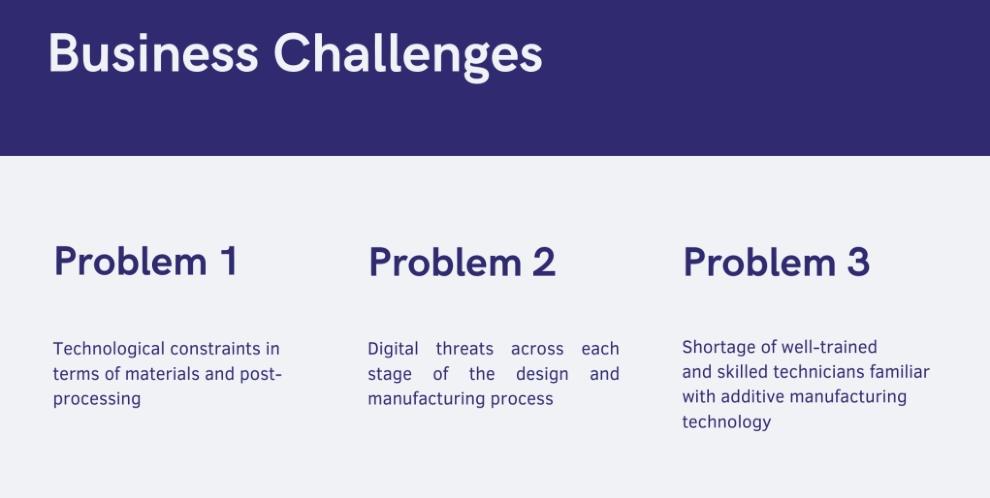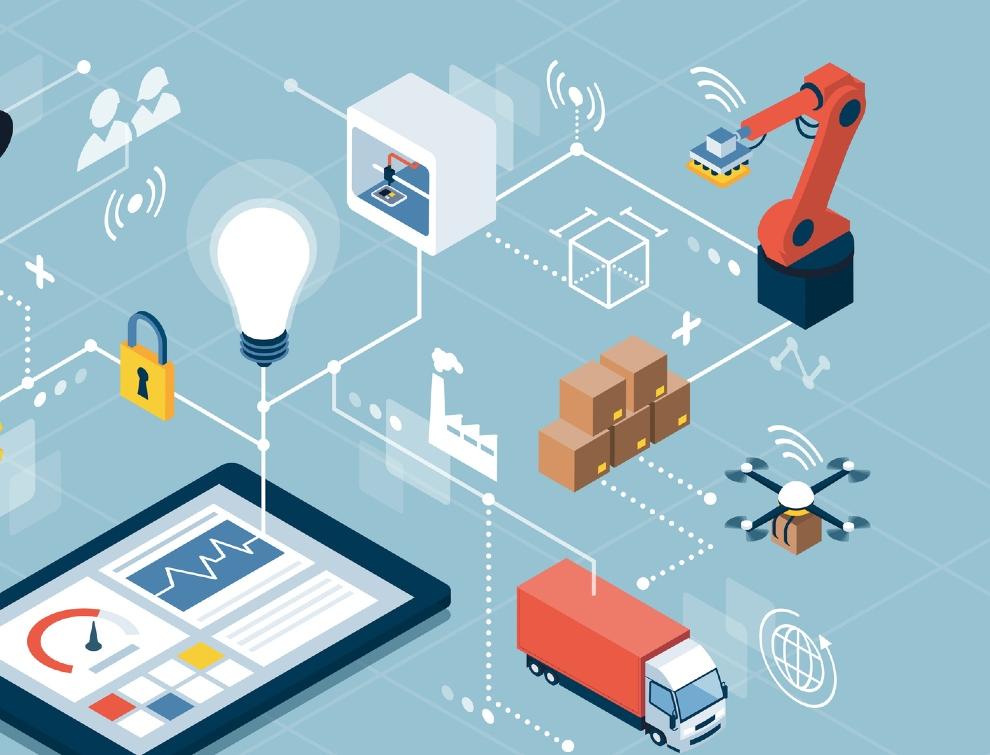- FMA
- The Fabricator
- FABTECH
- Canadian Metalworking
Our Publications
Categories
- Additive Manufacturing
- Aluminum Welding
- Arc Welding
- Assembly and Joining
- Automation and Robotics
- Bending and Forming
- Consumables
- Cutting and Weld Prep
- Electric Vehicles
- En Español
- Finishing
- Hydroforming
- Laser Cutting
- Laser Welding
- Machining
- Manufacturing Software
- Materials Handling
- Metals/Materials
- Oxyfuel Cutting
- Plasma Cutting
- Power Tools
- Punching and Other Holemaking
- Roll Forming
- Safety
- Sawing
- Shearing
- Shop Management
- Testing and Measuring
- Tube and Pipe Fabrication
- Tube and Pipe Production
- Waterjet Cutting
Industry Directory
Webcasts
Podcasts
FAB 40
Advertise
Subscribe
Account Login
Search
Additive manufacturing has a positive impact on the process and business sides of the manufacturing industry
3D printing is changing traditional supply chains, but with change comes challenges
- December 20, 2020
- Article
- Additive Manufacturing
Following is an edited excerpt of an article titled Staying Ahead of the Curve With Additive Manufacturing published by Infiniti Research, a global market research company with offices in the U.S., Canada, U.K., and China.—Ed.
As an industry grows, so do the technologies it employs. Additive manufacturing is a crucial indicator of the growth of the manufacturing industry.
The technology offers four key advantages:
1. Design Freedom. AM uses materials that can be printed to the desired design, removing the limitations of rigid and unyielding materials. This allows for a wider range of designs.
Plus, parts that previously required welding or brazing can now be designed and manufactured as a single piece.
2. Sustainability. Unlike machining and other subtractive manufacturing processes, AM uses just the material required to make the part, substantially reducing waste. And because there is no excess material to dispose of, energy consumption is lowered.
3. Accuracy and efficiency. The high level of automation, design freedom, and control afforded by 3D printing software provides high levels of accuracy that would not be possible with many other technologies.
4. Faster manufacturing cycles. Since the entire AM process is governed by efficient software, a large amount of time is saved transferring information. This allows faster prototyping and, therefore, faster testing of designs.
Additive’s impact on business
Besides having a positive impact on the overall manufacturing industry and other industries associated with it, AM impacts business, too, in the following ways:
• A 3D printer allows goods and products to be used as needed and when required. Customers can acquire products, spare parts, and goods as needed, and businesses can produce parts as needed or forecast.
• Since a single 3D printer can produce a complete part without the need for tooling, it reduces dependence on fixtures and lowers production time. Further, there is a reduced need for manual intervention during the manufacturing process, seeing as most of the process is automated. This lowers labor costs and allows the use of less-skilled operators.
• AM permits immediate changes to be made to the product design or manufacturing process. With other manufacturing methods, a product design flaw often leads to major adjustments in the manufacturing process to accommodate the flaw. Since AM typically uses one raw material and can be digitally controlled, simplifying changes, which, in turn, makes product optimization easier.
Overcoming additive disadvantages
While additive manufacturing offers numerous advantages, it also has certain drawbacks that make it difficult for industries and companies to readily adopt 3D printing. Producing a part can be slow because machines lay down one layer at a time.
Other AM drawbacks include the industrywide lack of expertise about the technology, the large initial investment and maintenance costs, and the lack of digital infrastructure required for AM to exhibit all of its capabilities.
These drawbacks, however, can be dealt with as a company’s AM system begins to grow.
Helping a client justify AM
That proved to be the case for an Infiniti client—a firm based in Spain challenged by meeting the upfront capital expenditures for machines and facilities necessary to support AM. The company also faced difficulties in ensuring consistent quality and reliability of products produced through AM techniques, as well as the relative slowness of 3D printing, which limited opportunities for mass production.
The client’s team members wanted to thoroughly investigate the market challenges and growth opportunities. To do so, they needed to gather comprehensive information about the market and customers. They approached Infiniti Research to discuss its market growth mapping capabilities.
The client also wanted to discuss these challenges:
• Technological constraints in terms of materials, process implementation, postprocessing, and quality assurance.
• Digital threats across each stage of the design and manufacturing process.

An Infiniti client seeking to adopt AM was confronted by numerous challenges, including technological constraints, digital threats, and lack of skilled workers. Infiniti Research
• The shortage of well-trained and skilled technicians familiar with AM technology.
• The ability of engineers to establish design principles.
Infiniti gathered actionable insights on emerging and untapped potential in the target regions at small and medium-sized AM firms. Also, the researchers identified the most suitable distributors of raw materials in each region. The Infiniti team evaluated whether an additive solution was a good fit for the company, as well as impacts along the entire supply chain and product lifecycle associated with the use of AM. The team then created a roadmap, including a pilot in the targeted areas before scaling operations. And a study was conducted to identify which technologies would be important for gaining a competitive advantage. As a result of the team’s market growth mapping solutions, the client changed its business model, leading to long-term sustainable growth. The client also was able to identify profitable opportunities, improve market share, optimally allocate resources, and identify digital threats and take strategic approaches to tackle them.
This subsequently enhanced efficiency across each stage of the design and manufacturing process. And, by recruiting well-trained and skilled technicians familiar with AM technology, the client was able to better manage demand and supply requirements.
The company was able to sign new contracts with leading companies in the aerospace and automotive market. Within one year, the client was able to maximize its current revenue flow and realize savings of over €3.8 million (US$4.65 million).
The article Staying Ahead of the Curve With Additive Manufacturing is available in its entirety at Infiniti Research’s website.
About the Publication
- Podcasting
- Podcast:
- The Fabricator Podcast
- Published:
- 04/16/2024
- Running Time:
- 63:29
In this episode of The Fabricator Podcast, Caleb Chamberlain, co-founder and CEO of OSH Cut, discusses his company’s...
- Trending Articles
- Industry Events
16th Annual Safety Conference
- April 30 - May 1, 2024
- Elgin,
Pipe and Tube Conference
- May 21 - 22, 2024
- Omaha, NE
World-Class Roll Forming Workshop
- June 5 - 6, 2024
- Louisville, KY
Advanced Laser Application Workshop
- June 25 - 27, 2024
- Novi, MI




























